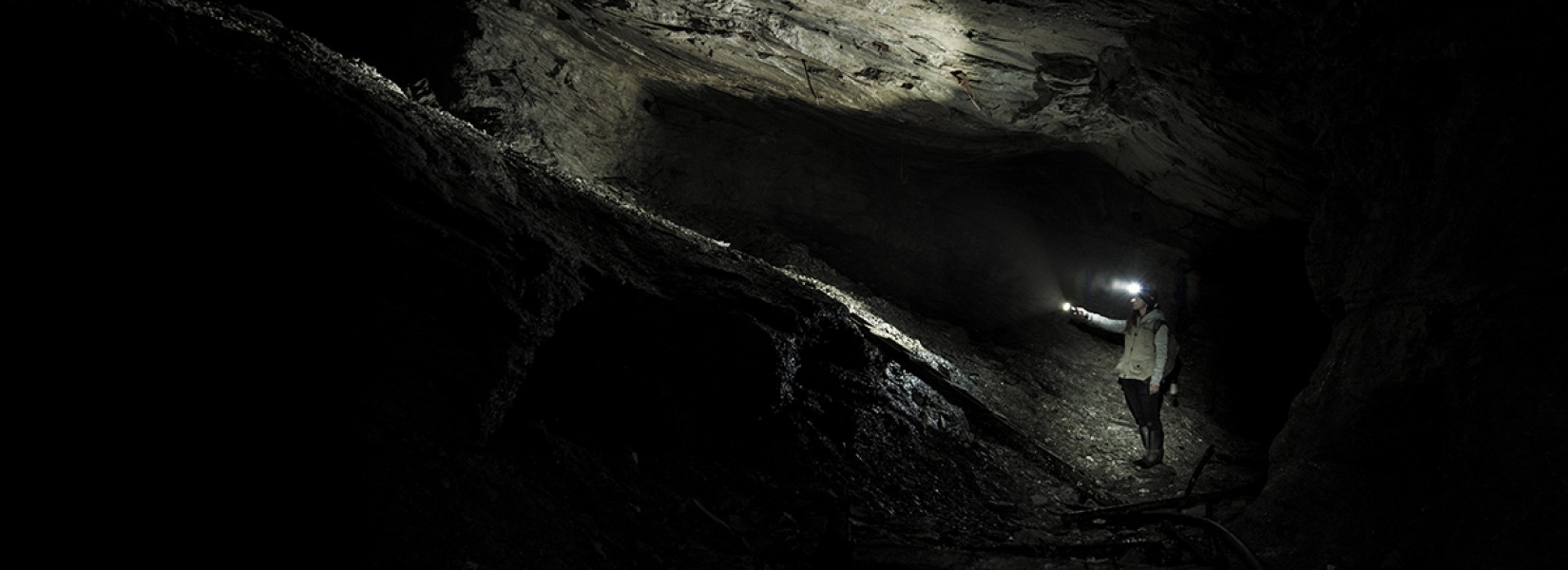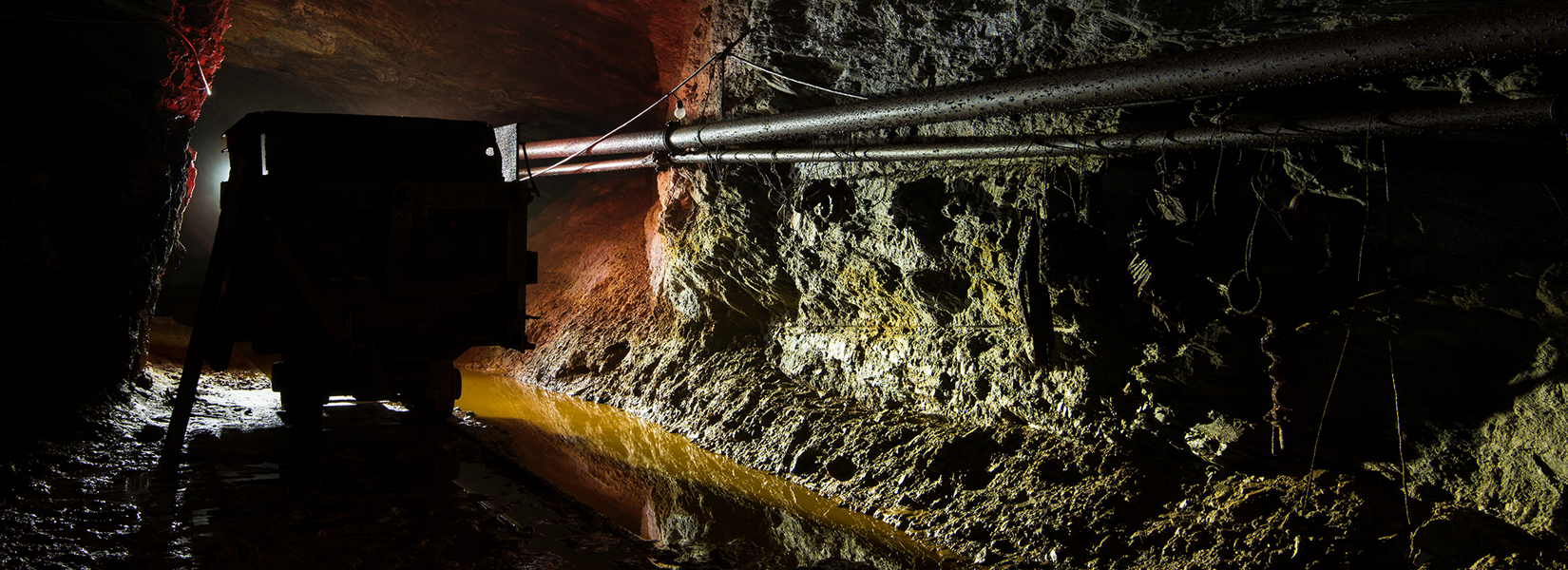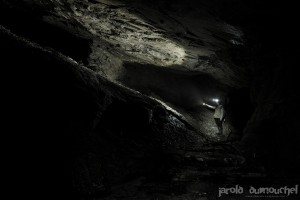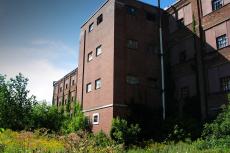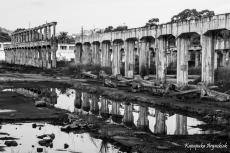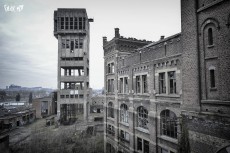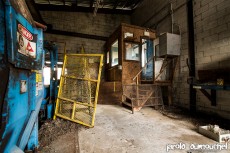Destroyed by mechanical shovels in 2011, it is a true slice of history of the city of Saint-Jean-sur-Richelieu who was destroyed that day in February. The adventure of the Singer factory has lasted over 100 years and has gave work to thousand of...
The old and abandoned mine
A walk in the mountain bowels
Heavily damaged by the time, the old copper mine is closed for several years. While its lower floors are completely flooded with muddy and stagnant water, the ground floor was, meanwhile, weakened by a sedimentary rock ceiling that collapsed in some places.
Inside the mine, the relics of a bygone era await there, gnawed by the rust. 30 centimeters of opaque water cover the rails and make this walk risky. The water is cold and you don't see your feets. The humidity through you like a sieve. Ten degrees Celsius also separate the external temperature from the inside. The place is quiet. Except for our feet in the water, we hear only these drops of water falling from the ceiling. In some places, limestone stalactites have formed and are about 30 centimeters long.
When you enter the tunnel, it only takes a few tens of meters to discover a small locomotive, once used to pull wagons filled with the precious ore that was processed on site in facilities located at the exit of the mine.
A little further into the tunnel, we find this old elevator that was used to send the miners in the depths of the mountain. Cemented in order to secure the area, this room is surprising with its ceiling located fifteen meters above the ground. Installations for the elevator are astonishing for this confined area.
Few meters from there, empty wagons located in the different tributaries of the tunnel give us a idea how deep these tunnels goes.
In some places, the contact with water, air and various minerals have gave multiple colored walls. From green to orange through the white, black and yellow, the beauty of the place is surprising.
Related content
The history of the Babcock & Wilcox in the Galindo valley began during the First World War when the difficulties of the Compañía de los Caminos de Hierro del Norte de España will result in the sale of the plant to the Babcock & Wilcox...
The Coal mine of Hasard de Cheratte is the main colliery of Société anonyme des Charbonnages du Hasard, composed of four mine shafts. It is located in Cheratte, a section of the Belgian town of Visé located in the Walloon Region in the province...
The advantage of a 4 hours ride to visit an abandoned sawmill is that we increase our chances of finding an intact place without the slightest trace of vandalism. Or at least, very little.
All along the road, the fear of finding a...

